Year 6
The English curriculum is built around the three interrelated strands of language, literature and literacy. Teaching and learning programs should balance and integrate all three strands. Together, the strands focus on developing students' knowledge, understanding and skills in listening, reading, viewing, speaking, writing and creating. Learning in English builds on concepts, skills and processes developed in earlier years, and teachers will revisit and strengthen these as needed.
In Years 5 and 6, students communicate with peers and teachers from other classes and schools, community members, and individuals and groups, in a range of face-to-face and online/virtual environments.
Students engage with a variety of texts for enjoyment. They listen to, read, view, interpret and evaluate spoken, written and multimodal texts in which the primary purpose is aesthetic, as well as texts designed to inform and persuade. These include various types of media texts including newspapers, film and digital texts, junior and early adolescent novels, poetry, non-fiction and dramatic performances. Students develop their understanding of how texts, including media texts, are influenced by context, purpose and audience.
The range of literary texts for Foundation to Year 10 comprises Australian literature, including the oral narrative traditions of Aboriginal and Torres Strait Islander Peoples, as well as the contemporary literature of these two cultural groups, and classic and contemporary world literature, including texts from and about Asia.
Literary texts that support and extend students in Years 5 and 6 as independent readers describe complex sequences, a range of non-stereotypical characters and elaborated events including flashbacks and shifts in time. These texts explore themes of interpersonal relationships and ethical dilemmas within real-world and fantasy settings. Informative texts supply technical and content information about a wide range of topics of interest as well as topics being studied in other areas of the curriculum. Text structures include chapters, headings and subheadings, tables of contents, indexes and glossaries. Language features include complex sentences, unfamiliar technical vocabulary, figurative language, and information presented in various types of graphics.
Students create a range of imaginative, informative and persuasive types of texts such as narratives, procedures, performances, reports, reviews, explanations and discussions.
(source: www.australiancurriculum.edu.au)
Achievement Standard
Receptive modes (listening, reading and viewing)
By the end of Year 6, students understand how the use of text structures can achieve particular effects. They analyse and explain how language features, images and vocabulary are used by different authors to represent ideas, characters and events.
Students compare and analyse information in different and complex texts, explaining literal and implied meaning. They select and use evidence from a text to explain their response to it. They listen to discussions, clarifying content and challenging others' ideas.
Productive modes (speaking, writing and creating)
Students understand how language features and language patterns can be used for emphasis. They show how specific details can be used to support a point of view. They explain how their choices of language features and images are used.
Students create detailed texts elaborating on key ideas for a range of purposes and audiences. They make presentations and contribute actively to class and group discussions, using a variety of strategies for effect. They demonstrate an understanding of grammar, and make considered vocabulary choices to enhance cohesion and structure in their writing. They use accurate spelling and punctuation for clarity and make and explain editorial choices based on criteria.
(source: www.australiancurriculum.edu.au)
- Plus Plan
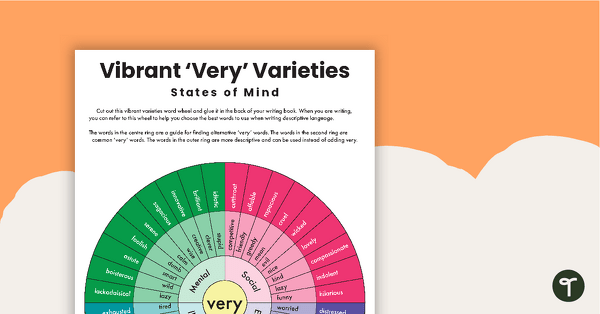
Vibrant Varieties – Other Words for 'Very' Wheel
Replace the word 'very' in your students' writings by giving them a 'wheely' good synonyms reference guide.
- Plus Plan
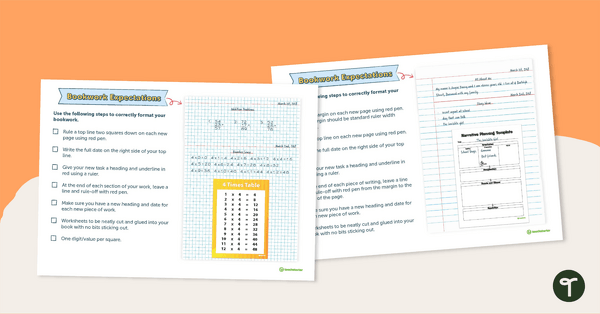
Bookwork Expectations Posters
A checklist for students to refer to when displaying bookwork.
- Plus Plan
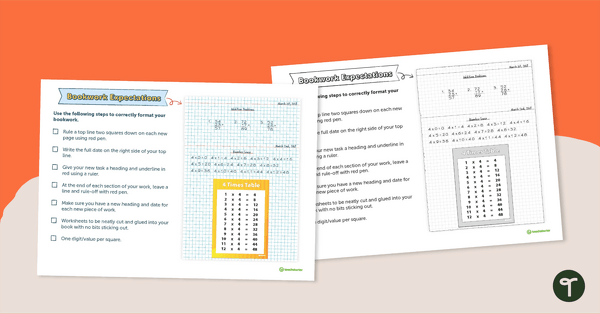
Numeracy Bookwork Expectations Posters
A checklist for students to refer to when displaying numeracy bookwork. There are low colour and black and white versions, plus editable versions in case you need to add your own expectations.
- Plus Plan
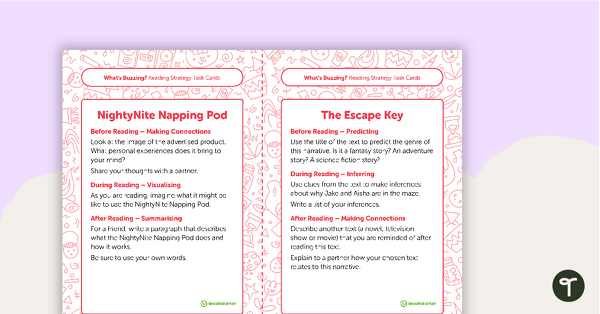
Year 6 Magazine – "What's Buzzing?" (Issue 3) Task Cards
A set of five literacy rotation task cards to be used in conjunction with Issue 3 of Teach Starter's Year 6 magazine.
- Plus Plan
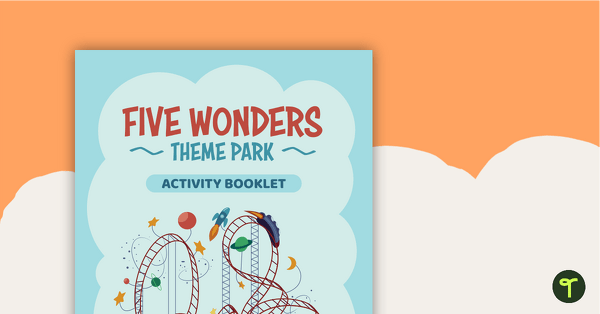
Five Wonders Theme Park: Slither House Sketch – Project
An inquiry project that encourages students to research animals and their habitats and design a reptile house in a theme park.
- Plus Plan
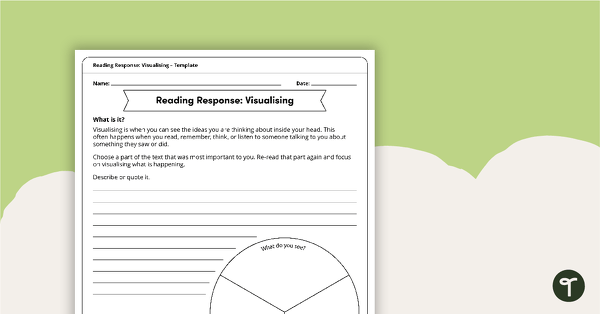
Reading Response Visualising – Template
A comprehension template for students to practise visualising.
- Plus Plan
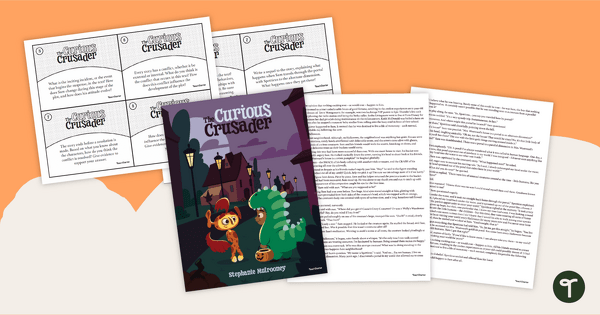
Halloween Reading Comprehension – Fiction Story and Task Cards
Practise reading comprehension skills with an exciting Halloween reading comprehension activity for Year 4 students.
- Free Plan
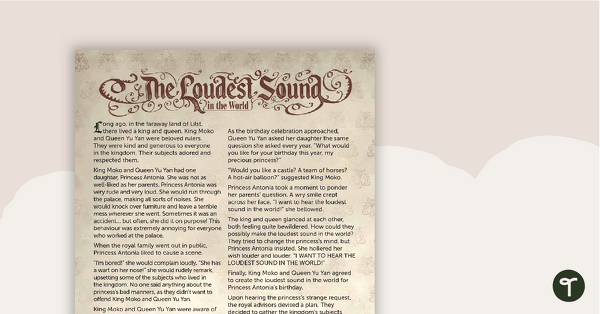
The Loudest Sound in the World – Comprehension Worksheet
A comprehension worksheet for a narrative about a princess who demands to hear the loudest sound in the world.
- Plus Plan
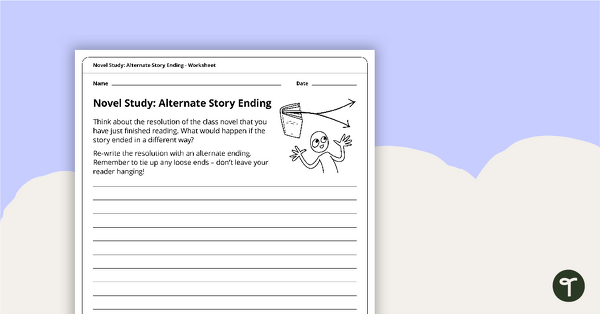
Novel Study - Alternate Story Ending Worksheet
A worksheet which encourages students to write an alternate ending to a shared class story.
- Free Plan
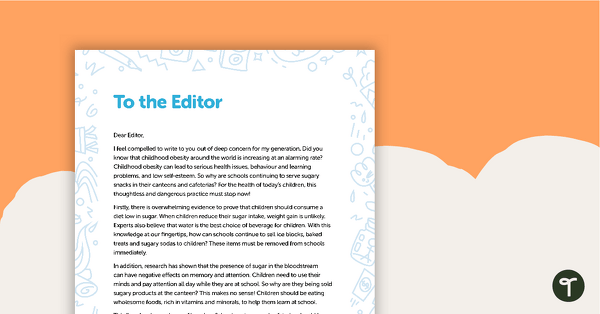
Letter to the Editor (Sugary Snacks Ban) – Worksheet
A comprehension worksheet for a letter to the editor from the Year 5 magazine (Issue 3).
- Plus Plan
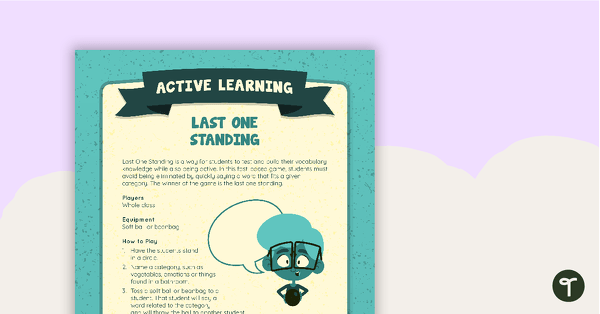
Last One Standing Active Game
An active game that allows students to build their vocabulary knowledge.
- Plus Plan
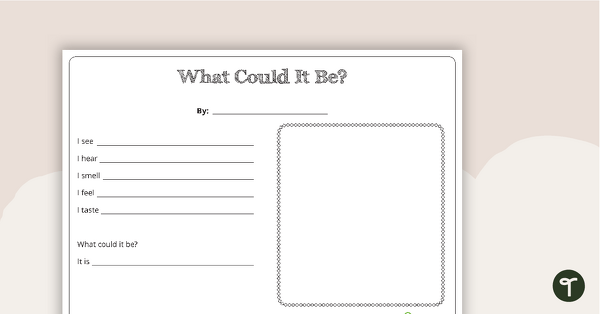
What Could It Be? - Sensory Poem Template
A template for students to use when learning how to write sensory poems.
- Plus Plan
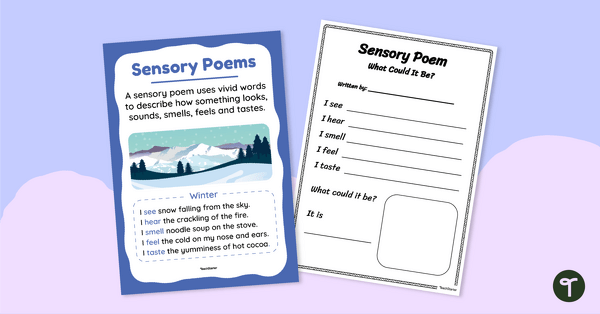
Sensory Poem Poster
A poster providing a definition and example of a sensory poem.
- Plus Plan
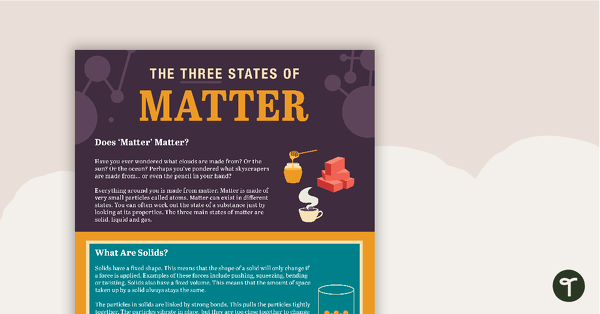
The Three States of Matter – Worksheet
A comprehension worksheet for a scientific report from the Year 5 magazine (Issue 3).
- Free Plan
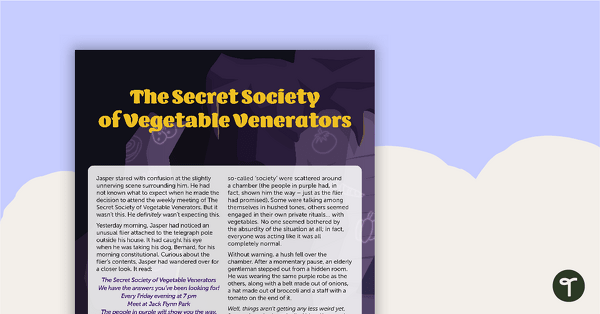
The Secret Society of Vegetable Venerators – Worksheet
A comprehension worksheet for a narrative from the Year 5 magazine (Issue 2).
- Plus Plan
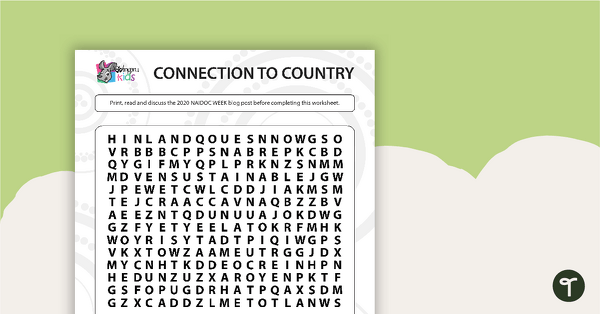
NAIDOC Week Connection to Country Word Search - Upper Primary
A NAIDOC Week Connection to Country Word Search suitable for upper primary school students.
- Plus Plan
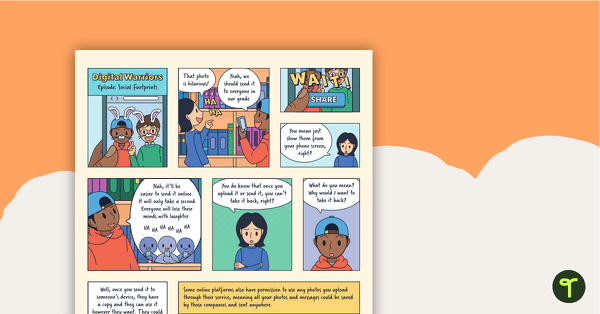
Digital Warriors: Social Footprints – Comprehension Worksheet
A comprehension worksheet for a comic about being safe when sharing photos on digital platforms.
- Plus Plan
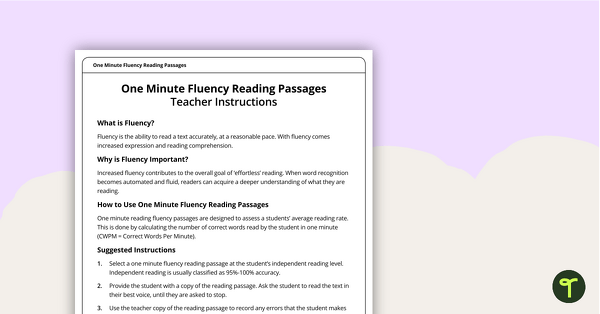
Fluency Reading Passage - Ultimate Frisbee (Year 6)
A non-fiction text to use when assessing students' fluency.
- Plus Plan
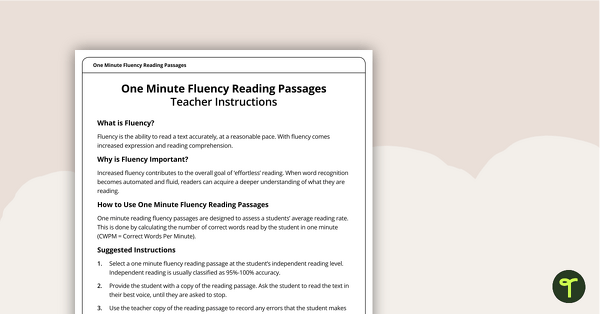
Fluency Reading Passage - The New Pet (Year 6)
A fiction text to use when assessing students' fluency.
- Plus Plan
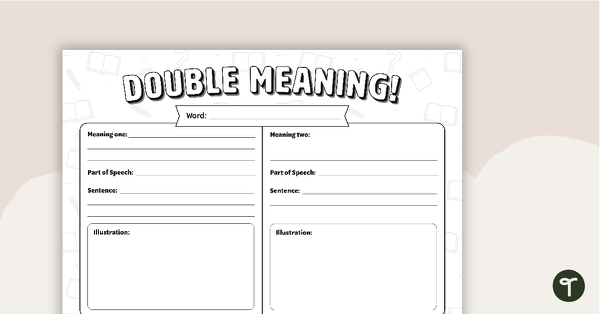
Double Meaning Vocabulary Worksheet
A worksheet to use in the classroom when identifying homonyms.
- Plus Plan
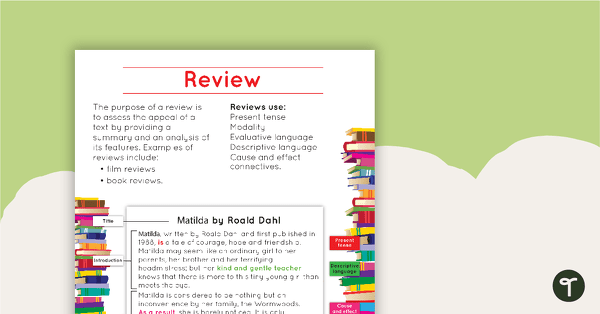
Review Text Type Poster With Annotations
A poster about reviews, including an annotated example.
- Plus Plan
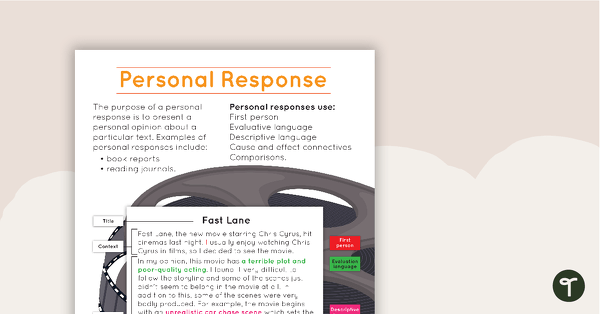
Personal Response Text Type Poster With Annotations
A poster about personal responses, including an annotated example.
- Plus Plan

Queensland Cursive Entries and Exits Spaceship - Green
A set of 12 Queensland Cursive entry and exit shuttles to join together to make a handwriting spaceship.
- Plus Plan
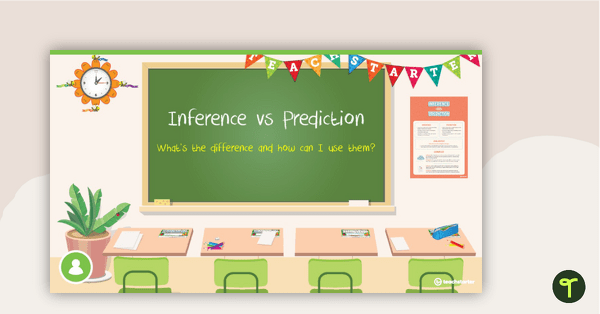
Inference vs Prediction - Presentation
A teaching presentation outlining the similarities and differences between inference and prediction.
- Plus Plan
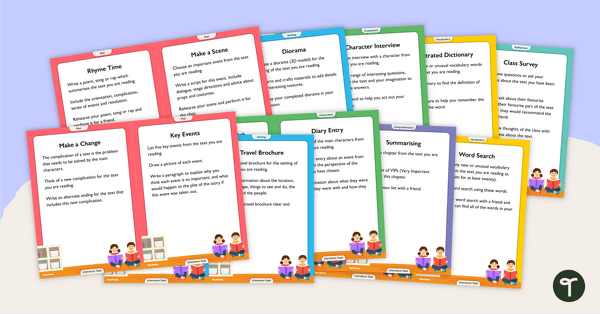
Literature Task Cards
A set of 30 literature tasks to assist your students with examining and responding to literature.
- Plus Plan
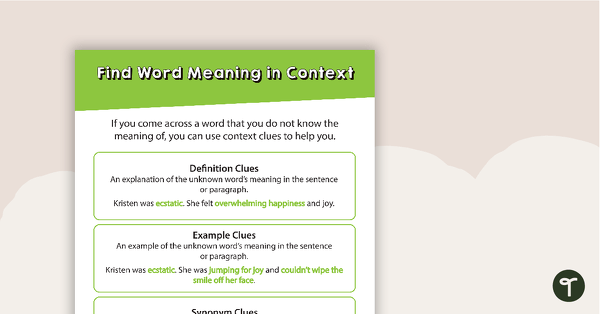
Comprehension Task Cards - Finding Word Meaning In Context
A set of comprehension task cards to help students find word meaning in context when reading.
- Plus Plan
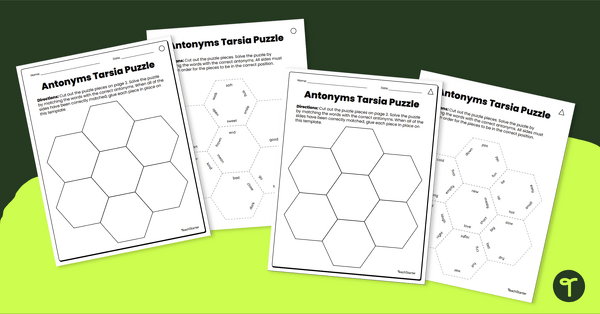
Antonyms Polygon Puzzle
Match antonym pairs with an engaging opposite words tarsia puzzle.
- Plus Plan
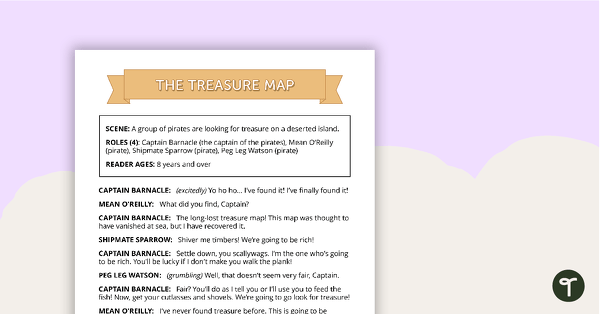
Comprehension - Treasure Map
A fun script and set of questions to help students develop reading and comprehension strategies.
- Plus Plan
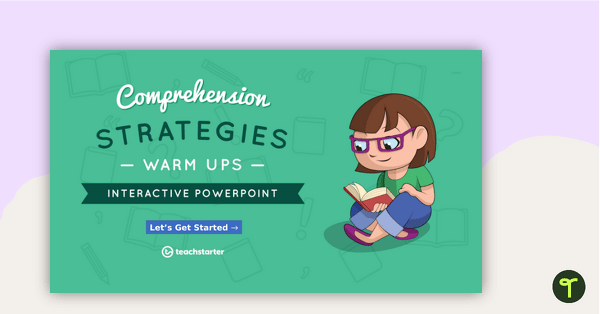
Comprehension Strategies - Interactive PowerPoint
An engaging 48 slide interactive PowerPoint to use in the classroom when developing comprehension strategies.
- Free Plan
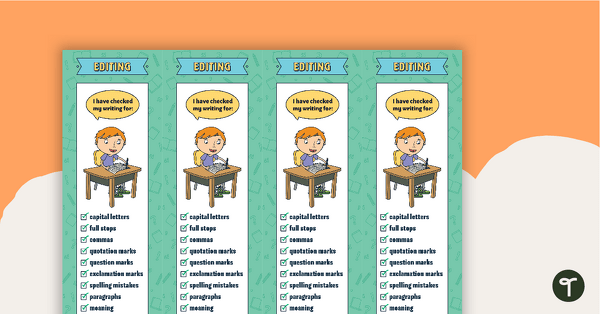
Editing Bookmarks
A clear and colourful editing checklist for students to refer to when proofreading their writing.
- Plus Plan
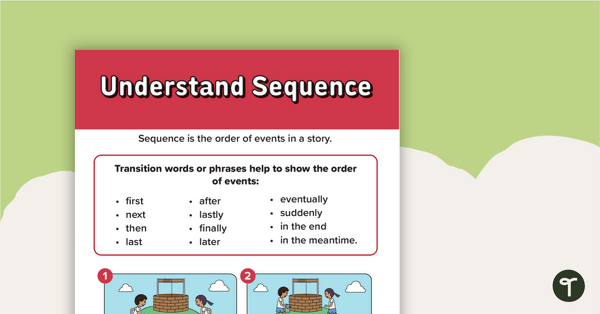
Understand Sequence Poster
A poster highlighting how to sequence when reading a piece of text.
- Plus Plan
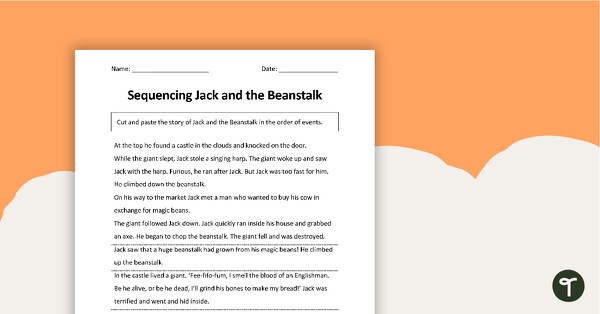
Understanding Sequence - Jack and the Beanstalk
A worksheet to use when teaching students how to understand sequence when reading.